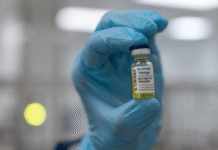ONE WAY to fight diseases including HIV infection and autoimmune disorders could involve changing how a naturally occurring enzyme called SAMHD1 works to influence the immune system, new research suggests.
The study, led by researchers from The Ohio State University, details how the enzyme influences proteins that stimulate the immune response.
SAMHD1 isn’t a molecular “good guy” or “bad guy” per se, but there are cases in which blocking its activity might thwart disease progression, said Li Wu, the study’s senior author and a professor of veterinary biosciences and microbial infection and immunity in Ohio State’s Center for Retrovirus Research.
The research, conducted in human and mouse immune cells, appears online in the journal Proceedings of the National Academy of Sciences.
“Lacking this enzyme due to SAMHD1 gene mutations can activate the human immune system and increase inflammation, and now we better understand the fundamental biological process behind that,” Wu said.
“In a perfect world, SAMHD1 is responsible for balanced regulation of the immune response, but it also could limit HIV or other viral infections and alter the progression and treatment of certain cancers. We need good immune responses, obviously, but we don’t want overwhelming immune activation.”
Before this study, it was unclear whether and how SAMHD1 regulated immune responses, Wu said.
Scientists identified the human gene for this enzyme in 2000, and since then it’s been linked to human diseases including autoimmune disorders, HIV infection and cancers.
Unlocking the precise way in which it influences disease progression is one of the goals of Wu’s lab. Previous research had established SAMHD1 as a key player in inhibiting HIV replication in human immune cells, piquing his interest.
The new study illuminated the way in which SAMHD1 interacts with several cellular proteins that play a critical role in regulating innate immune responses. Importantly, the enzyme can act as an inhibitor of potentially harmful responses during viral infection.
“The enzyme’s job is to break down a DNA building block in our cells- to act as ‘molecular scissors,’” Wu said.
“Too much of this building block due to SAMHD1 deficiency caused by genetic mutations can lead to autoimmune diseases and help cancerous tumors grow. If we can find a way to cut off or reduce the supply, the disease might not be viable – like a car without gas.”
This study could open up the possibility of finding ways to turn this activity on and off, making way for new therapeutic approaches for hard-to-treat diseases, Wu said.

















